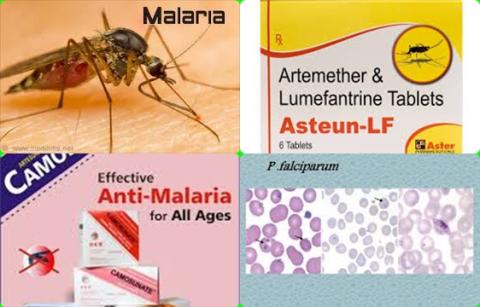
Objectives:
The majority of Plasmodium falciparum malaria cases in Africa are treated with the artemisinin combination therapies artemether-lumefantrine (AL) and artesunate-amodiaquine (AS-AQ), with amodiaquine being also widely used as part of seasonal malaria chemoprevention programs combined with sulfadoxine-pyrimethamine. While artemisinin derivatives have a short half-life, lumefantrine and amodiaquine may give rise to differing durations of post-treatment prophylaxis, an important additional benefit to patients in higher transmission areas. Therefore, this review article has been conducted.
Is there a difference in public health impact when artesunate-amodiaquine (AS-AQ) versus artemether-lumefantrine (AL) is used as first-line antimalarial drug for P. falciparum case management?
Study design:
This review article included individual patient data from 8 clinical trials of artemether-lumefantrine versus artesunate-amodiaquine in 12 sites in Africa (n = 4,214 individuals).
The median age in the study population was 2.8 years (IQR = 1.5-4.2).
Results and conclusions:
The investigators found a mean duration of post-treatment protection of 13.0 days [95% CI = 10.7-15.7] for artemether-lumefantrine and 15.2 days [95% CI = 12.8-18.4] for artesunate-amodiaquine overall.
However, the duration varied significantly between trial sites, from 8.7-18.6 days for artemether-lumefantrine and 10.2-18.7 days for artesunate-amodiaquine.
The investigators found significant predictors of time to reinfection in multivariable models were transmission intensity, age, drug and parasite genotype.
Where wild type pfmdr1 and pfcrt parasite genotypes predominated (=20% 86Y and 76T mutants, respectively), artesunate-amodiaquine provided ~ 2-fold longer protection than artemether-lumefantrine.
Conversely, at a higher prevalence of 86Y and 76T mutant parasites (> 80%), artemether-lumefantrine provided up to 1.5-fold longer protection than artesunate-amodiaquine.
These differences in the duration of protection could alter population-level clinical incidence of malaria by up to 14% in under-5-year-old children when the drugs were used as first-line treatments in areas with high, seasonal transmission.
The investigators concluded artesunate-amodiaquine provided a slightly longer median duration of post-treatment prophylaxis than artemether-lumefantrine (15.2 versus 13.0 days) when all data were pooled together. Furthermore, artesunate-amodiaquine provides longer protection than artemether-lumefantrine when most infections are by wild type parasites, while artemether-lumefantrine provides longer protection than artesunate-amodiaquine in areas with higher prevalence of the pfmdr1 86Y and pfcrt 76T mutations. Therefore, countries may wish to consider the prevalence of these mutations when deciding the first-line treatment.
Original title:
The duration of chemoprophylaxis against malaria after treatment with artesunate-amodiaquine and artemether-lumefantrine and the effects of pfmdr1 86Y and pfcrt 76T: a meta-analysis of individual patient data by Bretscher MT, Dahal P, […], Okell LC.
Link:
https://www.ncbi.nlm.nih.gov/pmc/articles/PMC7043031/
Additional information of El Mondo:
Find more information/studies on food fortificatiion and malaria right here.